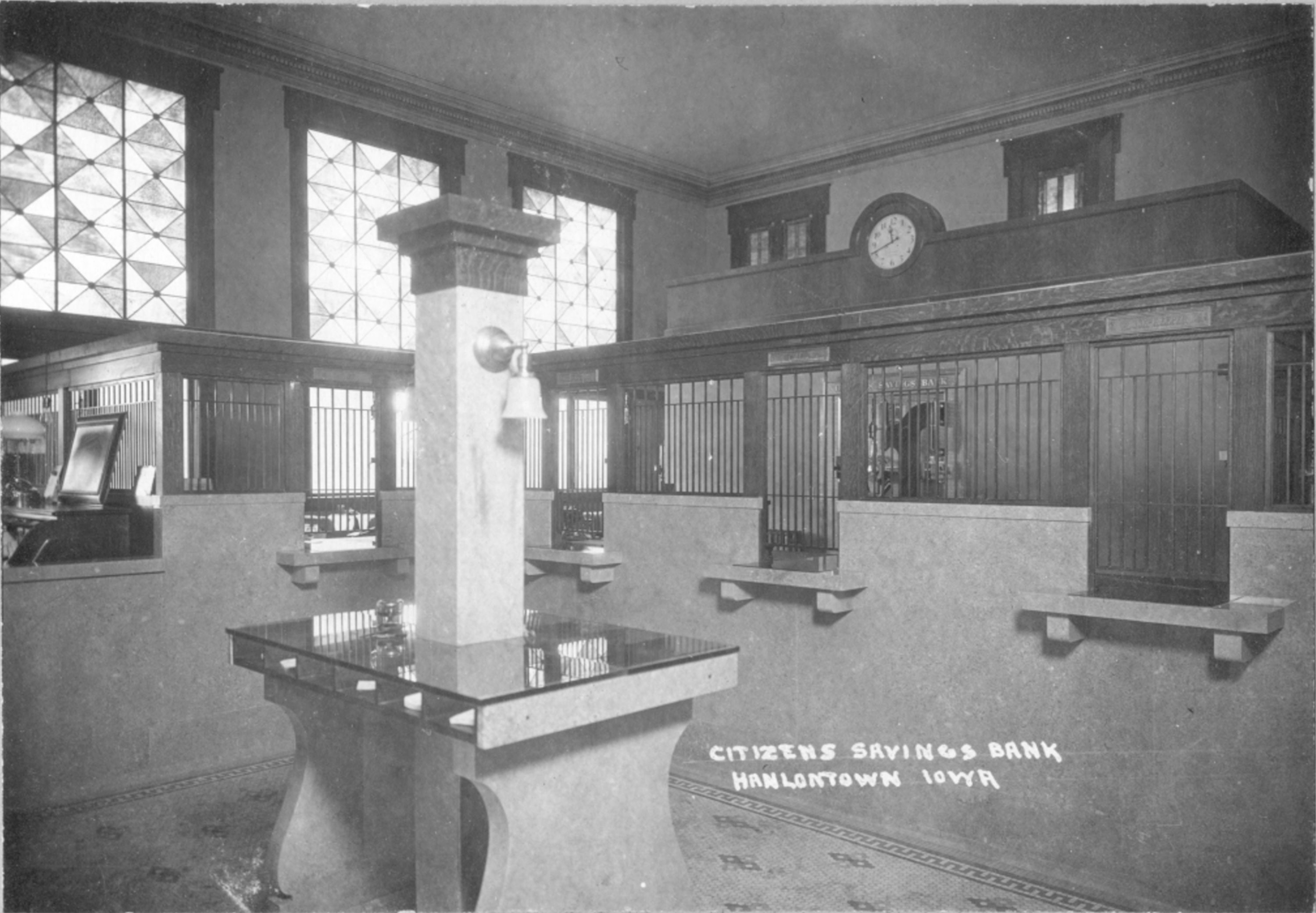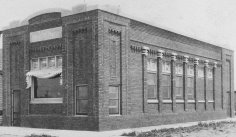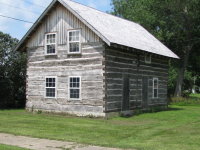Citizens Savings Bank

Open: 2 p.m. - 4 p.m. Sundays from the Sunday following Memorial Day to the Last Sunday in August. The former Citizens Savings Bank building was commissioned and financed by C. H. MacNider. The exterior of the building combines elements from a variety of architectural styles. The exterior is designed predominantly in the Classical Revival style. A closer look however reveals elements of other styles including Greek Revival and Art Deco. The interior is done in the Prairie School style, and abounds with oak woodwork, stained glass, and marble.
 The building was designed by Einar 0. Broaten and
constructed in 1919. Broaten is credited, wholly or in part, with the
design of several of the lesser-known Prairie
School homes in Mason City. He has three other buildings currently
listed on the National Register of Historic Places.
The building was designed by Einar 0. Broaten and
constructed in 1919. Broaten is credited, wholly or in part, with the
design of several of the lesser-known Prairie
School homes in Mason City. He has three other buildings currently
listed on the National Register of Historic Places.
Ownership of the building by the Worth County Historical society allows area
residents and tourists the opportunity to view this architect's
interpretation of the Prairie School style.
The bank operated under the name "Citizens Savings Bank” until Sept. 1, 1981. It continued operating under various names until closing in Sept. 2000. The bank held the distinction of being the oldest bank in the county, and reportedly was one of two county Banks to survive the 1930's depression.
The museum, operated by Hanlontown's Preserving Our Past (POP) focuses on Hanlontown history. This building is one of the Worth County Historical Societies sites thought the county.
The Farmers' Savings Bank which ope ned
in 1919 was built with a exterior done in the Prairie School Style. The
opening of this bank was a major factor in C. H. MacNider's decision to
build the Citizens Savings Bank. . The Farmers Savings Bank handled the funds for most of the farmers
organizations in the area and was the center of the farmers business
activities. In the spring of 1932, they moved to our neighbor city of
Fertile. After that it housed a series of restaurants. The longest of
those was the Furness Cafe which opened for business in December of 1952
and operated for the next 25 years.This building is directly across the
street from the Citizens Savings Bank building
ned
in 1919 was built with a exterior done in the Prairie School Style. The
opening of this bank was a major factor in C. H. MacNider's decision to
build the Citizens Savings Bank. . The Farmers Savings Bank handled the funds for most of the farmers
organizations in the area and was the center of the farmers business
activities. In the spring of 1932, they moved to our neighbor city of
Fertile. After that it housed a series of restaurants. The longest of
those was the Furness Cafe which opened for business in December of 1952
and operated for the next 25 years.This building is directly across the
street from the Citizens Savings Bank building
Sime-Oswald Cabin
This pioneer cabin’s oak logs still bear the marks of the ax that
split their lengths almost 150 years ago. They were hewn at a time when
the country was reinventing itself after the Civil War. The cabin was
built b
Leo and Jen’s son, the late Andy Oswald and his wife Pat donated the cabin and its contents to the historical society in 2005. It is being reconstructed and restored just to the west of the Citizens Savings Bank Museum. Progress to date was largely due to the dedication of volunteer Arden Bergan whose accidental death has delayed completion of the project.